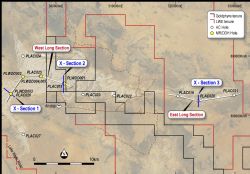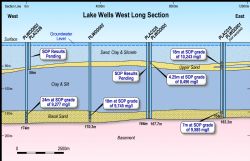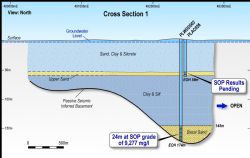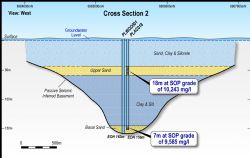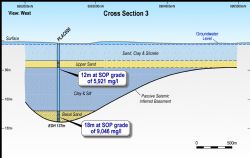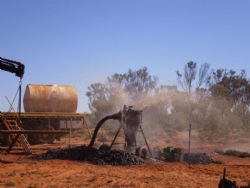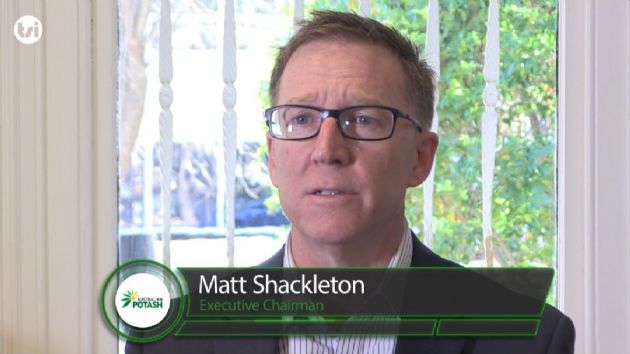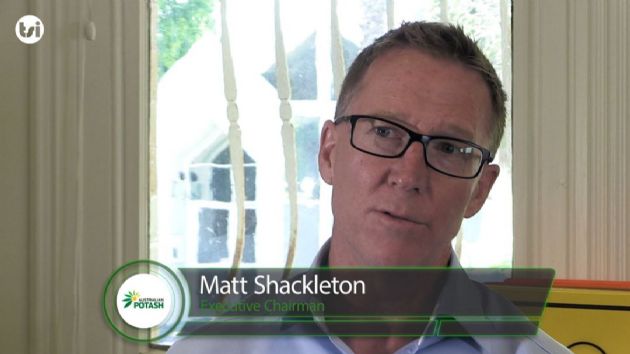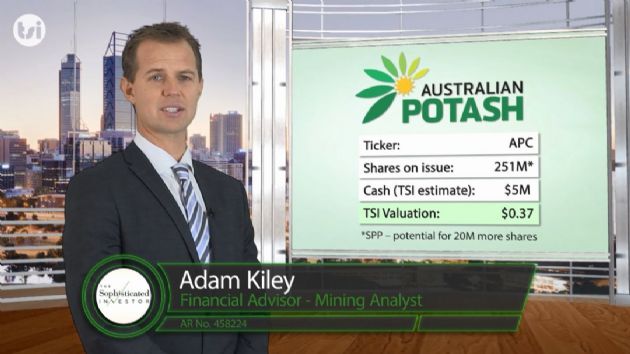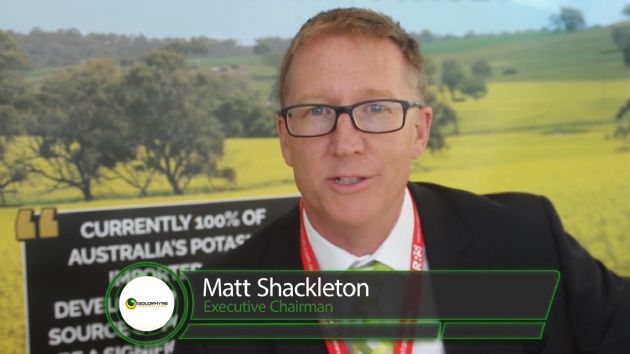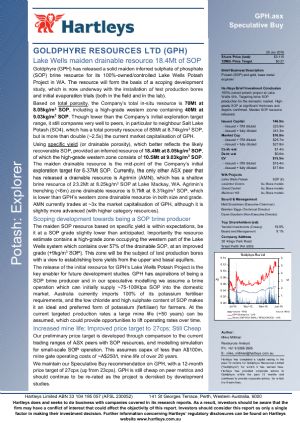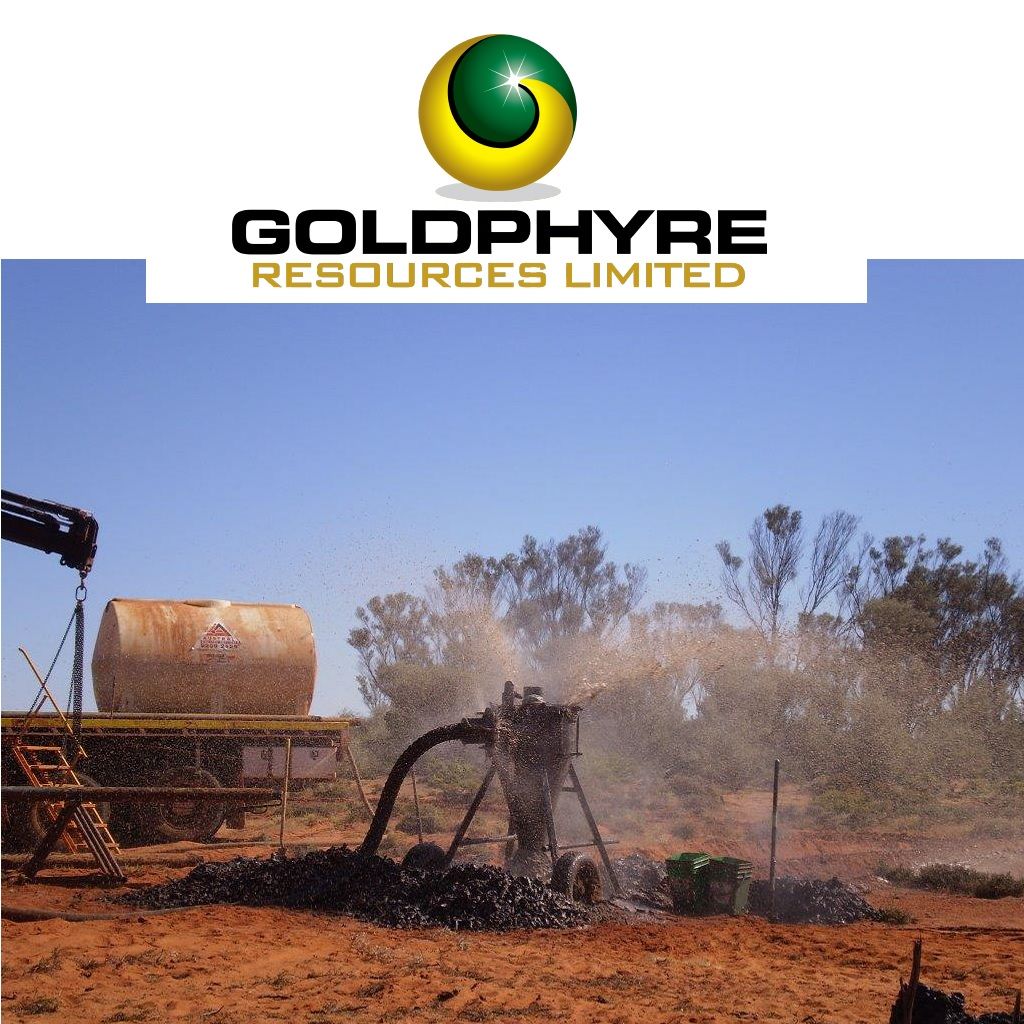
High Grade Assays Point to Significant Maiden Resource at Lake Wells Potash Project
Perth, May 23, 2016 AEST (ABN Newswire) - Goldphyre Resources ( ASX:GPH) is pleased to announce high grade first assays from the key basal and upper sands at its Lake Wells Potash Project, 500km north-east of Kalgoorlie (refer Appendix 2 in link below). The assays stem from three mud-rotary/diamond holes and three aircore holes. A further seven aircore holes have been drilled with assays expected over coming weeks. These will be followed by the release of the Maiden Resource later next month.
ASX:GPH) is pleased to announce high grade first assays from the key basal and upper sands at its Lake Wells Potash Project, 500km north-east of Kalgoorlie (refer Appendix 2 in link below). The assays stem from three mud-rotary/diamond holes and three aircore holes. A further seven aircore holes have been drilled with assays expected over coming weeks. These will be followed by the release of the Maiden Resource later next month.
KEY POINTS:
- First assays from the key basal sands at the Lake Wells Potash Project reveal wide intersections and high grades of the premium-priced Sulphate of Potash (SOP)
- Intersections of both upper sands and basal sands indicate potential for potash-bearing aquifers in both sand layers
- Average grades are comfortably in line with Goldphyre's publicly-stated
Exploration Target
- First round results found in link below
- Results will be combined with those still to come from the remaining seven recently-completed holes to finalise the Maiden Resource
- Assays for remaining 7 holes imminent
- Test production bores to be installed into the upper and lower aquifers at two sites: test pumping planned for Q3
The assays received to date are very important because the grades and widths are well within the range estimated in the Lake Wells Potash Project Exploration Target. Figures 2 - 6 (see link below) depict the lithology found in the palaeochannel at the various drill sites reported here. The palaeochannel clays typically have a specific yield of 2% - 3%. However, the upper and basal sands can have a specific yield of 10% - 20%, meaning that up to ten times more brine held in the sand layers can be extracted, compared to the clays. The more high-permeability and high specific yield material present in the palaeochannel, the more brine can be recovered.
Goldphyre remains committed to targeting favorable project economics over simply drilling out the largest resource for size alone. To this end, these Lake Well's basal sand intersections are considered highly significant because it is from this layer of the palaeochannel sediments that Goldphyre is proposing to abstract the largest volumes of the high-grade potash brines confirmed in previous drilling. The Exploration Target supports Goldphyre's objective of producing 75,000-100,000 tonnes a year of sulphate of potash over 15 years or more at a capital cost of less than $100 million.
Goldphyre Executive Chairman Matt Shackleton said the grades and widths in the basal sands were comfortably in line with those used to calculate the Exploration Target.
"We are making very rapid progress in establishing the technical strength of the Lake Wells Potash Project," Mr Shackleton said.
"These first assay results from the basal sands further strengthen our confidence in the project's ability to be a major producer of sulphate of potash for the Australian market.
"As we can see in the long sections below, the results show that potash concentrations at the surface are repeated to depth, and in some holes get stronger through the basal layer.
"We look forward to receiving assay results for the remaining 7 holes of the drilling program in the coming weeks, which will lead to the announcement of our Maiden JORC Resource for Lake Wells in June.
"We are now planning the installation of test production bores in the September quarter, which will form the next round of testing."
The Exploration Target at the Lake Wells Potash Project is 6 - 37 million tonnes of contained SOP. This estimate is based on specific yield, which Goldphyre considers is the more relevant calculation because it represents the recoverable amount of potash. This in turn is the key figure used to calculate potential production rates and economic returns.
Goldphyre has also estimated total in-situ brine of 79 - 123 million tonnes of sulphate of potash. This figure is disclosed for industry comparison purposes only and does not represent the amount of potash the Company believes it can abstract at the Project.
Following the successful mud-rotary program in March, where thick intersections of the high-yielding basal sand layer were recorded, the purpose of the aircore program was to sample the basal layer to determine if the brine chemistry continued from surface to the basement of the palaeochannel.
In addition to confirming the high-grade potash grades at depth, this recent aircore campaign again intersected significant widths of the upper sand unit, previously not considered in the Exploration Target the Company published in March. Returning grades consistent with the brine chemistry in all samples, this upper aquifer has the very strong potential to improve the potential yield of the palaeochannel, as these upper sands have a greater specific yield than the intermediate clays (as utilised in the Exploration Target assessment).
The Lake Wells Potash Project
A drilling program conducted at Lake Wells in July 2015 identified high-grade potash mineralisation both beneath the lake and the low dune areas surrounding the lake. That drilling program generated wide intercepts of high-grade potash from surface to depths of 135m (down-hole), which was the depth capacity of the drill rig used.
Passive seismic survey programs have been conducted at the Project. This data permits the clear targeting of drill holes into the deepest parts of the palaeovalley. The coarse, unconsolidated sand/grit material found in the basal layer often has a high permeability, which facilitates drainage of the overlying hydrogeological units.
Goldphyre has finalised a mud rotary/diamond and aircore drilling program aimed at understanding the basal sand layer and to confirm deep brine chemistry. The Company plans to release a Maiden JORC Resource Estimate in H1 2016.
To view tables and figures, please visit:
http://abnnewswire.net/lnk/18V70OJQ
About Australian Potash Ltd
Australian Potash Limited (ASX:APC) is an ASX-listed Sulphate of Potash (SOP) developer. The Company holds a 100% interest in the Lake Wells Potash Project located approximately 500kms northeast of Kalgoorlie, in Western Australia's Eastern Goldfields.
Following the release of a Scoping Study in 2017, APC has been conducting a Definitive Feasibility Study (DFS) into the development of the Lake Wells Potash Project. The Company is aiming to release the findings of the DFS in H2 2019.
The Lake Wells Potash Project is a palaeochannel brine hosted sulphate of potash project. Palaeochannel bore fields supply large volumes of brine to many existing mining operations throughout Western Australia, and this technique is a well understood and proven method for extracting brine. APC will use this technically low-risk and commonly used brine extraction model to further develop a bore-field into the palaeochannel hosting the Lake Wells SOP resource.
A Scoping Study on the Lake Wells Potash Project was completed and released on 23 March 2017. The Scoping Study exceeded expectations and confirmed that the Project's economic and technical aspects are all exceptionally strong, and highlights APC's potential to become a significant long-life, low capital and high margin sulphate of potash (SOP) producer.
| ||
|




